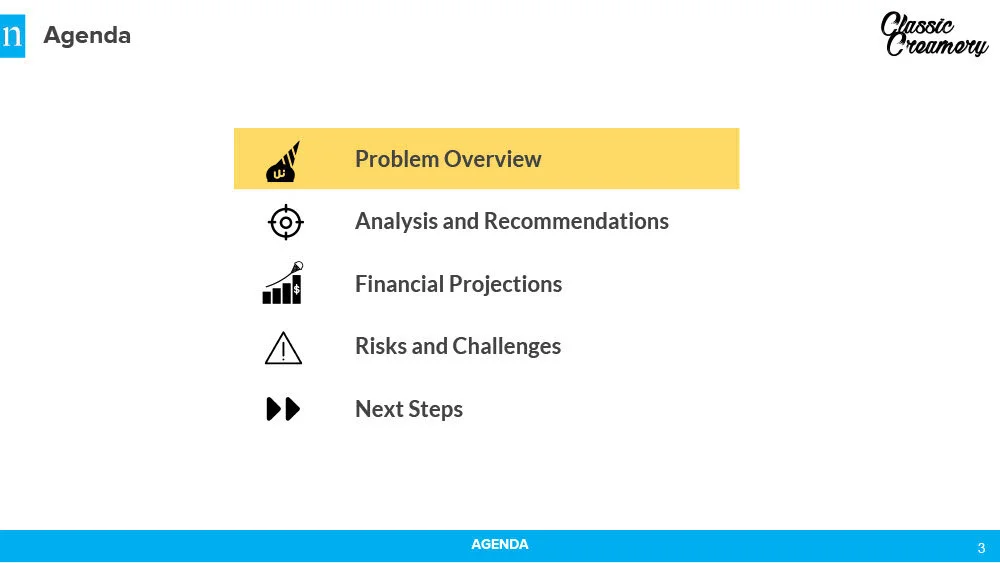wholesome indulgence:
The future of ice cream
PRoduct development & Market Penetration
Every year, Nielsen Holdings, PLC hosts a case competition for NYU students to participate in. Nielsen is a global measurement and data analytics company divided into two business units. This project focuses on Nielsen Global Connect, the business that provides consumer packaged goods manufacturers and retailers with data and insights to create an understanding of the complex and changing marketplace that companies need to innovate and grow.
A case competition is an event where teams receive a case study for a limited period of time, during which they must identify issues facing the company and develop a strategy to help the company achieve their goals.
Business Background: Classic Creamery is a market leader in the premium packaged ice cream business in the US. Despite its success in the past, the long term health of the company is at risk because of a startup brand, DeLightful Dairy, rapidly gaining shelf space and popularity among millennials.
Challenge:
(1) How should Classic Creamery respond, if at all, to the threat posed by DeLightful Dairy?
(2) How should Classic Creamer adapt, if at all, to the health and wellness and small brand trends?
Author’s note: Case competitions, from my experience, are usually based on real companies. If I were to speculate what the situation was here, I would not be surprised if Classic Creamery was an alias for Ben & Jerry’s and DeLightful Dairy was an alias for Halo Top.
My Team’s Recommendation:
Market Penetration: Strengthen the brand image to have cleaner labels that appeal more to the consumer base.
Nielsen’s studies show that Classic Creamery’s brand equity is already a competitive advantage that we believe should be leveraged. For ice cream, as a product and industry, consumers are less willing to experiment with new brands. Older consumers, especially, are frequent indulgers and extremely brand-loyal. In fact, 53% of consumers will buy the same brand over and over again.
One option we considered was new product additions. This is not a recommended approach because consumers are wary of unfamiliar ingredients and additives in sweets. Conflicting product lines (healthy alternatives and decadent ice creams) will dilute Classic Creamery’s strong brand equity.
Another study showed that 68% of consumers across all ages are willing to spend more for products with well sourced ingredients, resulting in a 27% annual growth in products featuring healthy ingredients on the labels.
Product Development: Build smaller sized packages because larger containers will no longer drive revenue.
Demographic changes shouldn’t change the consumer base of ice cream. Smaller sized packaging allows for greater flexibility of consumption for all generations. For example, there’s less cleanup for children who consume a single-serving cup as opposed to scooping out from a pint. It also gives millennials the opportunity to try a wider range of flavors and the working-age consumers to consumer on-the-go for ultimate convenience.
Many trends are the result of urbanization. Smaller packaged ice cream can be sold at a more diverse array of retailers (corner street bodegas and nation-wide grocery chains) and allow for consumers without cars to carry a smaller snack home. Ultimately, there’s a higher willingness-to-pay for accessibility and convenience.
Consumer psychographics suggests that smaller packages invoke less guilt and easier intake planning for those looking to follow a diet or with health concerns. Smaller packages also allow for higher margins because the consumer psych thinks of a smaller package as a one-time treat.
More details on our recommendations for Classic Creamery can be found in the presentation below, including more research, revenue and cost considerations, risks and challenges, and scalability:







































